EN-Engineering-Product-Hot-Rolled-Valast abrasion resistant TSN
Valast®
Efficient and reliable abrasion resistant steel sheet withstands harsh wear and tear whilst maintaining lasting quality – even in the most demandin

<a href=/en/brands/automotive/hilumin>HILUMIN®for cylindrical battery cell casings in electric vehicles.</a>

<a href=/en/brands/automotive/hi-lite>Hi-Lite:a thin non-oriented electrical steel for efficient and high-performance electric motors.</a>
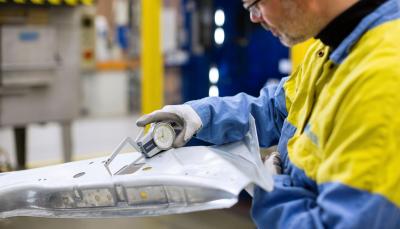
<a href=/en/brands/automotive/hyperform>Hyperform®: extra formability for lightweight AHSS design.Tackling weight, costs and performance si</a>

<a href=/en/brands/automotive/magizinc-auto>MagiZinc®Auto: advanced hot-dip galvanisedcoating for inner parts and outer panels.</a>

<a href=/en/brands/automotive/plt>Prime Lubrication Treatment:advanced surface treatment for smooth processing of automotive panels.</a>

<a href=/en/brands/automotive/serica-flo>SericaFLO®:a premium surface finish for a market-leading paint appearance.</a>

<a href=/en/brands/automotive/xpf>XPF® for easy lightweighting and improved energy absorption in complex structural vehicle parts.</a>

<a href=/en/brands/automotive>Brands in the Automotive product portfolio</a>

<a href=/en/brands/engineering/magizinc>MagiZinc®is an innovative replacement for conventional galvanised steels. It provides superior corr...</a>

<a href=/en/brands/engineering/valast>Valast®is an efficient, reliable, wear-resistant steel plate that tackles heavy wear and tear while...</a>

<a href=/en/product-ranges/engineering/direct-rolled/high-strength-steel>Ymagine® direct-rolled steel comes in five high-strength, low-alloy (HSLA) grades offering either w...</a>

<a href=/en/brands/engineering/ympress>Ympress®is a hot-rolled, high-strength, low-alloy steel with outstanding formability and consistent...</a>

<a href=/en/brands/engineering/ympress-laser>Tailor-made for efficient, high-speed laser cutting, this homogeneous, hot-rolled steel combines exc...</a>

<a href=/en/brands/engineering/ymvit>Tata Steel’s Ymvit® cold-rolled steel for enamelling delivers end product and process benefits in...</a>

<a href=/en/brands/engineering>Discover our engineering brands for various applications in the heavy vehicles sector, solar constru...</a>

<a href=/en/brands/green-steel-solutions>Together towards a zero-carbon emissions, circular world.</a>

<a href=/en/brands/packaging/protact>Protactlaminated steel is food-safe and optimised for efficient, sustainable canmaking with opportun...</a>

<a href=/en/brands/packaging/tcct>Asustainable, reliable replacement for conventional tin-free packaging steel (ECCS) developed by Tat...</a>

<a href=/en/brands/packaging>We make steel for packaging. Our specialist steels are designed for food and drinks cans, aerosols, ...</a>

<a href=/en/product-ranges/automotive/cold-rolled>Tata Steel offers a comprehensive range of cold-rolled batch-annealed products. This means we can ta...</a>

<a href=/en/product-ranges/automotive/hot-rolled>Hot-rolled steel offers performance, versatility and value. Our hot-rolled strip steel range include...</a>

<a href=/en/product-ranges/automotive/metallic-coated>Tata Steel offers a wide choice of metallic coated steel for inner and outer panels. Our product ran...</a>

<a href=/en/product-ranges/automotive/electro-plated-steel>Tata Steel is a committed partner within the automotive industry. Combining ourmaterials, design eng...</a>

<a href=/en/product-ranges/automotive>Explore our extensive range of automotive steel products designed to reduce your total cost of owner...</a>

<a href=/en/product-ranges/construction>Used globally, supplied locally, our innovative construction products have inspired pioneering susta...</a>

<a href=/en/product-ranges/engineering/hot-rolled>Hot-rolled steel offers performance, versatility and value.</a>

<a href=/en/product-ranges/engineering/direct-rolled>Tata Steel's Ymagine®direct-rolled steel: a viable alternative to cold-rolled and hot-rolled steel....</a>

<a href=/en/product-ranges/engineering/cold-rolled>Tata Steel offers a comprehensive range of cold-rolled steel comprising batch annealed products. Thi...</a>

<a href=/en/product-ranges/engineering/metallic-coated>Tata Steel offers a wide choice of metallic coated steel.</a>

<a href=/en/product-ranges/engineering>Working together with the world’s leading equipment makers, steel processors and domestic applianc...</a>

<a href=/en/product-ranges/packaging>As one of Europe’s leading suppliers of high quality packaging steels, we work closely with our bu...</a>

<a href=/en/product-ranges/plating/electro-plated>At Tata Steel Plating we work closely with our customers to find cost-effective solutions to technic</a>

<a href=/en/product-ranges/tubes/structural-tubes>Cold formed welded steel structural hollow sections supplied to EN10219.Produced with precision and ...</a>

<a href=/en/coil-data-on-demand>Make better decisions and reduce lead times with direct access to coil data. You can now empower you...</a>

<a href=/en/automotive/aurora-online>High quality data and expert advice to make your simulations easier to set up and more accurate.
</a>

<a href=/en/our-businesses/plating>Tata Steel's integrated business Plating is the world's leading expert in electroplating for technic...</a>

<a href=/en/our-businesses/steel-service-centre-feijen>Our service centre in Maastricht (Feijen) is part of our highly specialised distribution service for...</a>
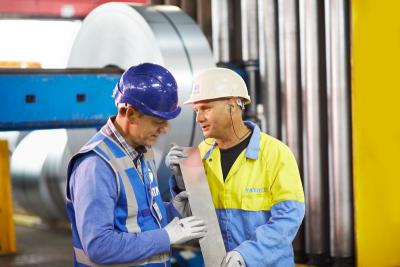
<a href=/en/our-businesses/steel-service-centre-multisteel>MultiSteel offers one of the broadest multi-metal ranges in Europe, including HRP, CRC, HDG, DSP and...</a>
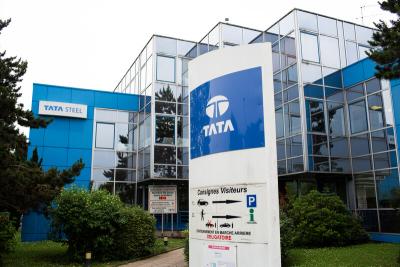
<a href=/en/our-businesses/steel-service-centre-unitol>Our Unitol steel service centre in Corbeil-Essonnes, France, offers one of the broadest ranges of st...</a>

<a href=/en/our-businesses/steel-service-centre-gelsenkirchen>Our Gelsenkirchen plant, producing slit coils and cut-to-size sheets, include slitters and blanking ...</a>

<a href=/en/our-businesses/steel-service-centre-layde>Layde steel slu is located in the north of Spain, the Basque Country.For the transformation of coils...</a>
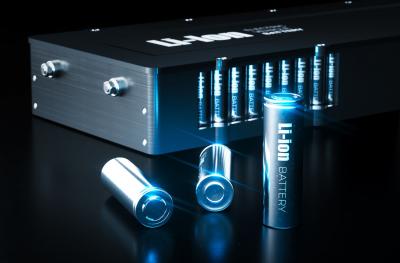
<a href=/en/expertise/automotive/applications/energy-storage>Enabling the transition to electrified vehicles by providing solutions for cylindrical battery casin</a>

<a href=/en/expertise/automotive/applications/seating>Steel design for automotive seats</a>

<a href=/en/expertise/automotive/applications/body-in-white>Supporting you from concept to series production. Increased energy absorption in BIW parts, reducing...</a>

<a href=/en/expertise/automotive/applications/chassis-and-suspension>Helping you strike the balance in chassis design.</a>

<a href=/en/expertise/automotive/applications/outer-panels>SericaFLO for excellent paint appearance on outer panels with appealing designs that are enabled by ...</a>
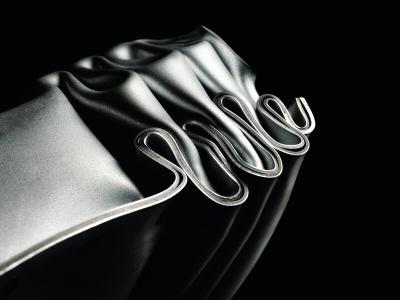
<a href=/en/expertise/automotive/applications>Tata Steel offers a wide, multi-product portfolio of strip, tubes and forging steels, including a sm...</a>

<a href=/en/expertise/automotive>Working with you on sustainable vehicles and value chains</a>

<a href=/en/expertise/engineering/applications/transportation>Our steels are used in trucks, trailers, trains and ships. Our expertise is in finding the right sol</a>

<a href=/en/expertise/engineering/case-studies/bergerecotrail>Using Ympress® S700MC to manufacture BERGERecotrail® semi-trailer bodies and welded-frames for the...</a>

<a href=/en/expertise/engineering/case-studies/frank-original-boron-manganese>Expansion of boron manganese steel offering for agricultural machinery in partnership with Frank Wal...</a>

<a href=/en/expertise/engineering/case-studies/hyster-yale>Opportunities for Hyster Yale to deliver lower total cost of ownership to its customers.</a>

<a href=/en/expertise/engineering/case-studies/jcb-landpower>EnablingJCB to develop an optimally-designed next-generation tractor.</a>

<a href=/en/expertise/engineering/case-studies/kuhn-gyrotedders>KUHN co-developed a newhollow section specification:Hybox TT.</a>

<a href=/en/expertise/engineering/case-studies/linssen-yachts>S235 steel products create ultra-smooth hulls for Linssen Yachts.</a>

<a href=/en/expertise/engineering/case-studies/palfinger>Crane maker Palfinger benefits from a unique partnership.</a>

<a href=/en/expertise/engineering/case-studies>We can make a real difference to your performance by understanding your business and delivering stee...</a>

<a href=/en/expertise/engineering/applications>Construction equipment applications, consumer products and more.</a>

<a href=/en/expertise/engineering/applications>Construction equipment applications, consumer products and more.</a>

<a href=/en/expertise/engineering/applications>Construction equipment applications, consumer products and more.</a>

<a href=/en/expertise/engineering/applications>Construction equipment applications, consumer products and more.</a>

<a href=/en/expertise/engineering/applications>Construction equipment applications, consumer products and more.</a>

<a href=/en/expertise/engineering/applications>Construction equipment applications, consumer products and more.</a>

<a href=/en/expertise/packaging/applications>Our packaging steel products are designedfor a diverse range ofapplications from aerosols to food ca...</a>

<a href=/en/expertise/packaging/case-studies/bonduelle>Two thirds of Dutch consumers didn'tknow that a can is endlessly recyclable according to consumer re...</a>

<a href=/en/expertise/packaging/case-studies/snert>Joris Bijdendijk is a renowned Dutch chef at the Michelin-starred RIJKS restaurant, located next to ...</a>

<a href=/en/expertise/packaging/case-studies/calvo-vuelca-facil>Consumers, from older users to children can sometimes find traditional tuna cans difficult to use du...</a>

<a href=/en/expertise/packaging/case-studies>We can make a real difference to your performance by understanding your business and delivering stee...</a>

In order to produce Valast 450 with the impeccably tight tolerances and exceptional hardness and surface quality that we wanted, we needed to spend a lot of time rethinking the heating and cooling process.
When steel is processed on a hot strip mill, it enters the mill as a slab heated to around 1200°C. Once the steel has been rolled to the correct gauge through five roughing stands and seven finishing stands, it is cooled with jets of water positioned above and below the steel strip.
The challenge that we faced was that, to achieve the optimum product properties, the water jets had to be very powerful in order to cool the steel as quickly as possible. However, the current cooling system did not have the capacity to do this – after all, it was installed long before Valast 450 had even been considered.
The most obvious solution would have been to upgrade the current cooling system, but that would have taken a long time to implement and result in unwanted down-time for our busy Hot Strip Mill. We needed another plan.
Within our development team, we have a highly skilled group of process control researchers and mill process technologists, who can design and recreate processes on a virtual model of the Hot Strip Mill. We put our challenge to them, and what they found was extraordinary.
They realised that the hardware already in place was perfectly capable of flowing enough water through the jets in order to cool the steel sufficiently. The limitation was actually the software that was being used to control the process.
Having spoken at length to suppliers of these kinds of control software, it became clear that they weren’t going to be able to help. So, we went back to our own R&D researchers who wrote a bespoke software programme, called STORM, which would allow us to cool the steel sufficiently and with the level of control we needed.
We tested STORM in modelling, and it proved our theory, so then it was implemented into the process, and now we can produce Valast 450 to the tight tolerances and surface quality that our customers expect.
Take a look at our article on Valast 450’s superior surface quality to find out how it could help your customers.
Efficient and reliable abrasion resistant steel sheet withstands harsh wear and tear whilst maintaining lasting quality – even in the most demandin